"The world is running out of antibiotics" World Health Organization (WHO) report confirms.
A report launched by WHO recently identified 51 new antibiotics and biologicals in clinical development to treat antibiotic-resistant pathogens. Among them all, only eight were classed by WHO as innovative treatments that will add value to the world’s current antibiotic treatment arsenal.1
New resistance mechanisms are emerging and spreading globally, threatening our ability to treat common infectious diseases. The misuse and overuse of antimicrobials are accelerating this process and now antibiotic resistance is present in every country. Without effective antimicrobials for the prevention and treatment of infections, medical procedures and major surgery both in animals and humans will become an extremely high risk.
Dr. Stephen Page is a veterinarian, clinical pharmacologist and a committed advocate of antimicrobial stewardship. He says that antimicrobial resistance (AMR) is a global problem and each and every one of us needs to be part of the solution.
“Addressing antibiotic resistance can only be achieved through a One Health approach and it can only be realised if we all understand it and appreciate our role in fighting it. From medical and veterinary professionals to mums, dads, pet owners, human patients and animals, we all have a role in fighting AMR.
“In Australia within veterinary medicine, we have judicious use guidelines available to guide us towards appropriate use of antibiotics in animals. We rank as one of the world’s lowest users of antibiotics in animals (and have one of the least worrying rates and types of AMR in animals), which is something the veterinary profession should be proud of. But we can’t afford to become complacent.”
An article published in Science last month compared the reported sales of important veterinary antimicrobials by country.2 Australia was a member of a select group of countries that reported very low sales of veterinary antimicrobials, a group that included New Zealand, Sweden, and the Netherlands.
“Based on a long history of interventions to improve antibiotic use, Denmark is considered the shining example, but interestingly, they are well behind us on the antibiotic sales front and have a higher consumption of veterinary antimicrobials than Australia.
“While this shows that we already have good control over the number of antibiotics we use in Aussie animals, we must now look to ways of improving what we do in relation to the quality of use, and by that, I mean how well we use antibiotics.
“To effect real change through antimicrobial stewardship, we need to ensure we are consistently looking to improve how we use antibiotics in animals. The best way to do this is to adopt a 5R’s approach in our review of antimicrobial stewardship – responsibility, reduction, refinement, replacement, and review (see Figure 1).3
Australian veterinarians continue to be increasingly involved and lead antimicrobial stewardship activities in our part of the world. Programs are currently being developed and rolled out in the poultry, pig, feedlot cattle, and salmon industries.
“We’ve worked closely with these industry bodies to implement stewardship programs to add to the infection control initiatives they already have in place. These programmes are already leading to a decline in disease and infection within these animal industries, and a corresponding decline in antibiotic use.
“A healthy animal does not require antibiotics so disease prevention is always the key to reducing antibiotic use in animals, in both pets and livestock. This comes down to a combination of many measures which include good biosecurity, infection control through proper hygiene and especially vaccination.
“In the case of Tasmania’s salmon industry, the Tasmanian government and industry jointly funded the development of new vaccines to address ongoing diseases, which were affecting the industry. The implementation of these vaccines had a marked positive effect on the health and welfare of the fish and the sustainability of the industry.
“Vaccines were developed in Tasmania that effectively controlled three types of bacteria in salmon and following that, there was a significant decline in antibiotic use in the industry.
“It really highlights how valuable vaccines are in preventing disease. Vaccines developed to address respiratory infections in cattle and vaccines for Mycoplasma gallisepticum and M. synoviae have revolutionised the way the cattle and poultry industries manage animal health.
“Our vaccine story is a tremendous one but it could be even better. There are vaccines that have been developed and used in the US and Europe that would be invaluable here in preventing disease in our production animals and allowing antibiotic use to be reduced even further. However, our quarantine policies don’t allow these vaccines to enter Australia, so we are limited in terms of the vaccines we have access to and we’ve had to become resourceful in developing our own vaccines here.
“The Australian veterinary profession is certainly leading the way in antimicrobial stewardship and fighting antimicrobial resistance. But, it’s an ongoing challenge and it’s important that veterinarians working in a small animal, as well as mixed/large animal practice, continue to use antibiotics responsibly so that we can preserve these important life-saving drugs,” Dr. Page said.
Figure 1. 5R’s approach to antimicrobial stewardship

References
- WHO. Antibacterial agents in clinical development: an analysis of the antibacterial clinical development pipeline, including tuberculosis. World Health Organization, Geneva, 2017
- Van Boeckel TP, Glennon EE, Chen D et al. Reducing antimicrobial use in food animals. Science 2017;357:1350-1352
- Page S, Prescott J, Weese S. The 5Rs approach to antimicrobial stewardship. The Veterinary record 2014;175:207-208.
This article appeared in the November 2017 issue of the Australian Veterinary Journal
